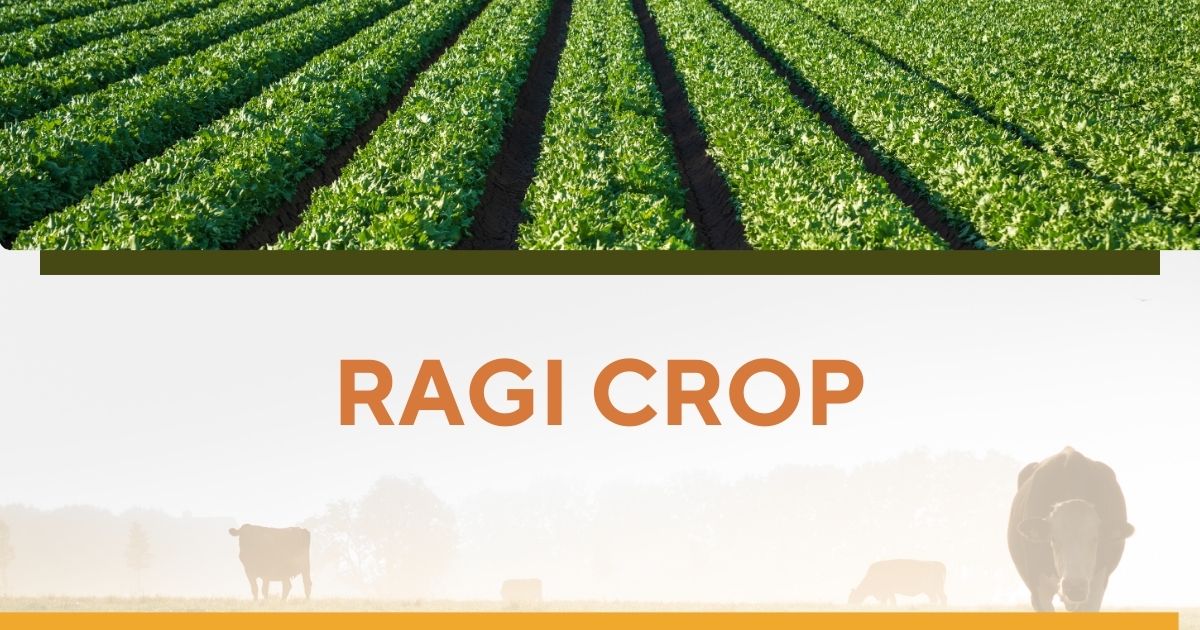Ragi, also known as finger millet, is a highly nutritious and drought-resistant cereal crop. It has been cultivated for centuries, especially in India and Africa, and is known for its health benefits and adaptability to various climatic conditions.
Origin and History of Ragi
Ragi has its origins in Africa, where it was first domesticated. Later, it spread to India, becoming a staple in many regions. Ancient texts and agricultural records show that ragi has been grown in India for over 4,000 years.
Climatic Requirements for Ragi Cultivation
Ragi is well-suited for warm and dry climates. It grows best in temperatures ranging from 25°C to 30°C. The crop is highly resistant to drought, making it an excellent choice for arid and semi-arid regions.
Soil Requirements for Ragi Farming
Ragi thrives in well-drained loamy to sandy soils. It can also grow in poor and less fertile soils where other crops struggle. The ideal soil pH for ragi cultivation is between 5.0 and 7.5.
Varieties of Ragi
There are several varieties of ragi cultivated across different regions. Some popular ones include Indaf-5, Indaf-9, GPU-28, and PR-202. Each variety has unique characteristics such as yield potential, resistance to diseases, and adaptability to specific soil types.
Land Preparation for Ragi Cultivation
Land preparation for ragi involves plowing the field thoroughly to break up soil clumps and improve aeration. Farmers usually plow the land 2-3 times before sowing to ensure a fine tilth, which helps in better root penetration and growth.
Sowing Methods of Ragi
Ragi can be sown using different methods, such as broadcasting, line sowing, or transplanting. Broadcasting is the most common method, but line sowing ensures better plant spacing and easier management.
Irrigation Requirements for Ragi
Ragi is a rainfed crop and requires minimal irrigation. However, in areas with insufficient rainfall, supplementary irrigation at critical growth stages, such as flowering and grain filling, enhances yields.
Fertilizer Management in Ragi Farming
Organic and chemical fertilizers help boost ragi production. Farmers often use farmyard manure, compost, and biofertilizers for sustainable farming. Chemical fertilizers like nitrogen, phosphorus, and potassium in balanced proportions improve growth and yield.
Weed and Pest Management in Ragi Farming
Weeds compete with ragi for nutrients and water. Manual weeding or herbicide application helps control weeds effectively. Common pests include shoot flies and stem borers, which can be managed using organic pesticides or integrated pest management techniques.
Diseases Affecting Ragi and Their Control
Ragi is susceptible to diseases such as blast, leaf spot, and smut. Proper crop rotation, use of resistant varieties, and timely fungicide application help in managing these diseases.
Harvesting of Ragi Crop
Ragi matures within 100-120 days. Harvesting is done when the grains turn brown and hard. Farmers usually cut the plants at the base and dry them before threshing to separate the grains.
Post-Harvest Processing of Ragi
After harvesting, ragi grains are dried and stored. Traditional methods like sun drying and modern techniques like mechanical drying are used. Proper storage in airtight containers prevents pest infestation.
Nutritional Benefits of Ragi
Ragi is a powerhouse of nutrients. It is rich in calcium, iron, fiber, and essential amino acids. It is particularly beneficial for bone health, diabetes management, and weight loss.
Economic Importance of Ragi
Ragi farming provides income to millions of small-scale farmers. The demand for ragi-based products like flour, malt, and biscuits is increasing, making it a lucrative crop.
Sustainability and Environmental Benefits
Ragi requires minimal water and chemical inputs, making it environmentally friendly. It improves soil health and prevents soil erosion, contributing to sustainable agriculture.
Conclusion
Ragi is a valuable crop that offers health benefits, economic advantages, and environmental sustainability. Its ability to grow in harsh conditions makes it a vital food security crop, especially in drought-prone areas.
FAQs
What are the main health benefits of ragi?
Ragi is rich in calcium, iron, and fiber, making it beneficial for bone health, diabetes management, and weight control.
How is ragi different from other millets?
Ragi has a higher calcium content than other millets and is more resistant to drought, making it ideal for dry regions.
Can ragi be grown organically?
Yes, ragi can be grown organically using farmyard manure, compost, and biofertilizers instead of chemical inputs.
What are the common pests affecting ragi crops?
Common pests include shoot flies and stem borers, which can be managed through organic pesticides and integrated pest management.
How is ragi processed after harvesting?
Ragi grains are dried, threshed, and stored properly to prevent moisture buildup and pest infestation.
